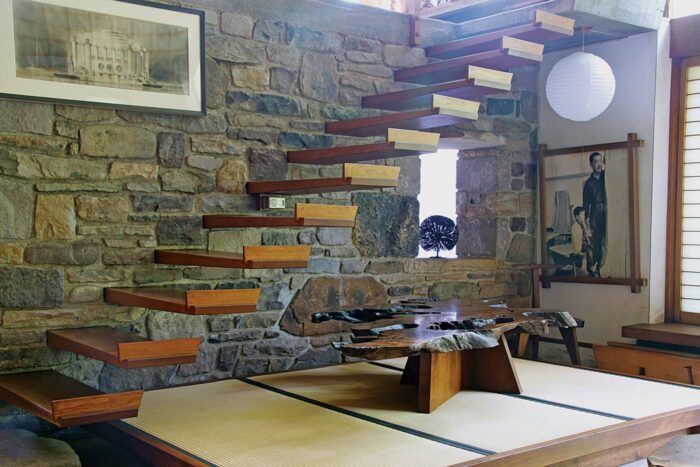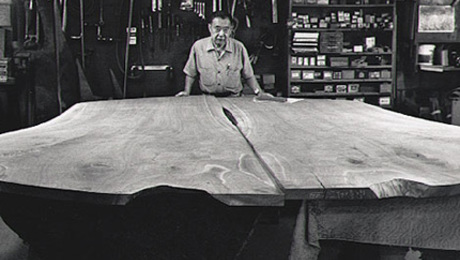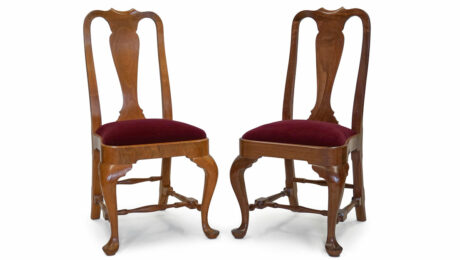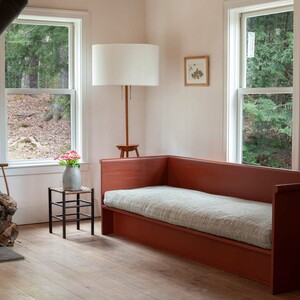Remarkable Mentors: George Nakashima
George Nakashima is known for blending aesthetic inspirations from Japanese, Danish modern, and American Shaker and Windsor traditions. He produced furniture with a commanding presence that was at once elegant, invitingly tactile, and a bit mysterious.
George Nakashima did no teaching to speak of, yet his influence has been as pervasive as that of any American furniture maker of the 20th century. Blending aesthetic inspirations from Japanese, Danish modern, and American Shaker and Windsor traditions, he produced furniture with a commanding presence that was at once elegant, invitingly tactile, and a bit mysterious.
His use of live-edge boards in fine furniture prompted a wave of such work by others that shows no sign of receding, and his pairing of raw-edged and highly figured wood with simplified geometric shapes in table and cabinet bases feels so profoundly, satisfyingly right it’s hard to imagine another option.
Nakashima’s aesthetic and philosophical vision is most fully expressed in his home, a collection of buildings he designed and built in New Hope, Pa., over the course of four decades. Trained at MIT in architecture, he worked in that field in the 1930s in Japan and India. During World War II, when he was interned with his family for his Japanese heritage, he met a Japanese woodworker in the internment camp and learned some rudiments of the craft.
Later, when he settled in Pennsylvania, he made some furniture himself and produced designs for companies such as Knoll. Soon, he began hiring craftsmen to build furniture for private commissions, and his business grew.
Nakashima’s furniture business is still producing his designs and those of his daughter, Mira, who has run the company since his death in 1990.
His book The Soul of a Tree (1984) spelled out his conviction that through his work, he gave trees a new incarnation. It was the farthest thing from a how-to book, but it became essential reading for many aspiring furniture makers.
Into the trees
Throughout his career, George Nakashima cultivated a close tie with his material. He was always on hand at the sawmill when special logs were cut, and he took customers to his lumber sheds to select specific slabs for work they were ordering. His daughter, Mira, continues the practice today.


Cross-cultural craft
An architect by training, Nakashima blended a modernist sensibility with inspirations from Japan, Windsors, and his favored material. The collection of buildings he designed as his residence and workspace is filled with his furniture. All these photos were taken there.























Log in or create an account to post a comment.
Sign up Log in